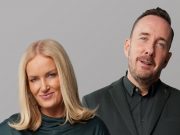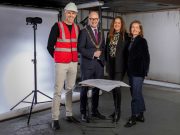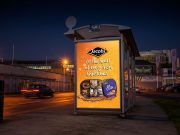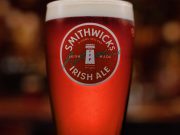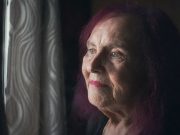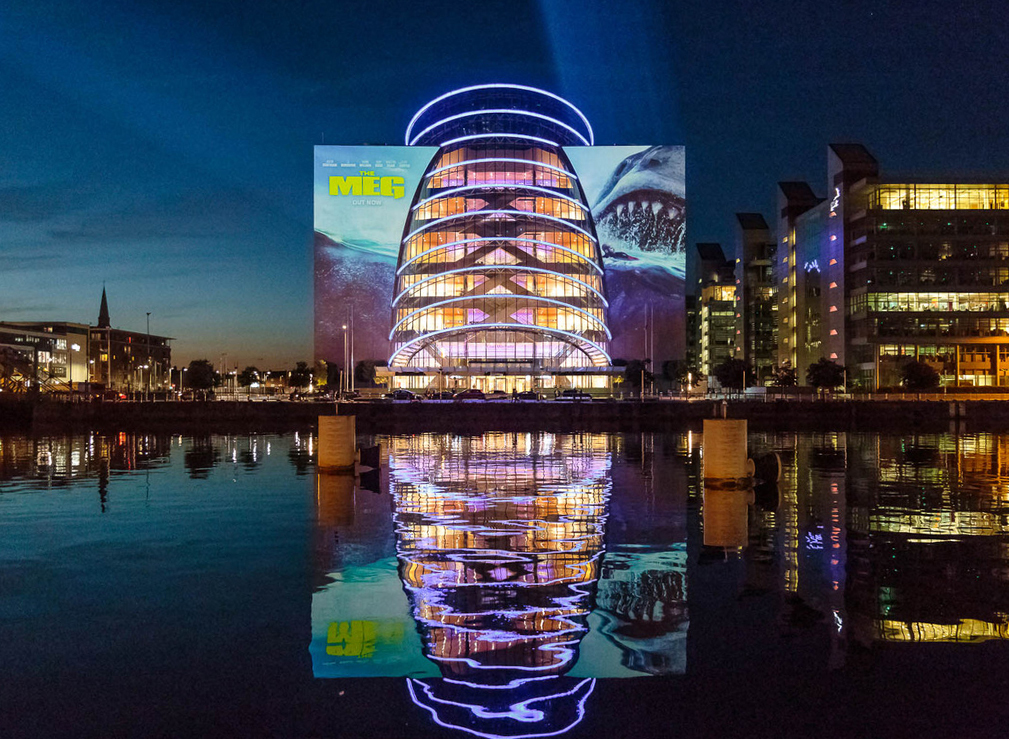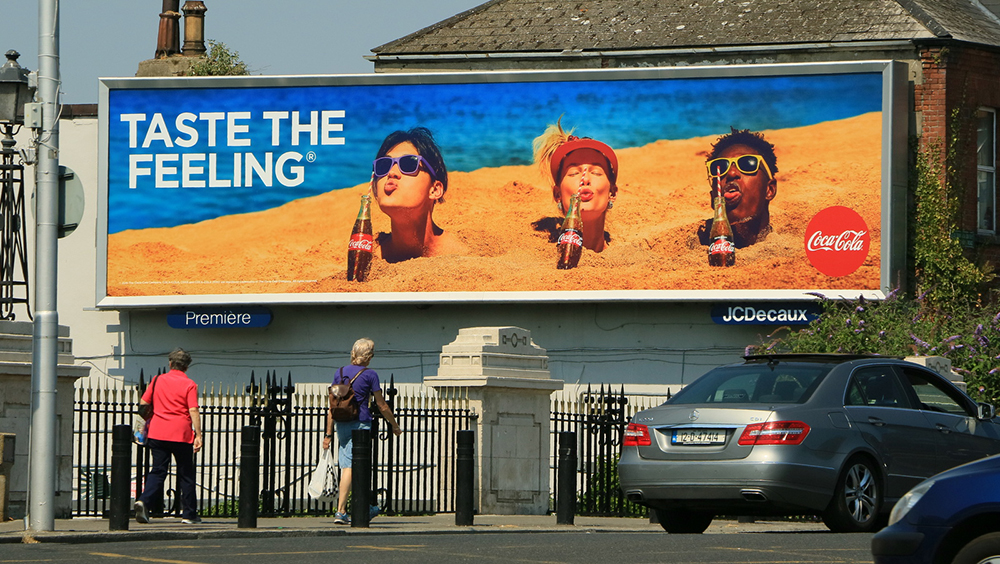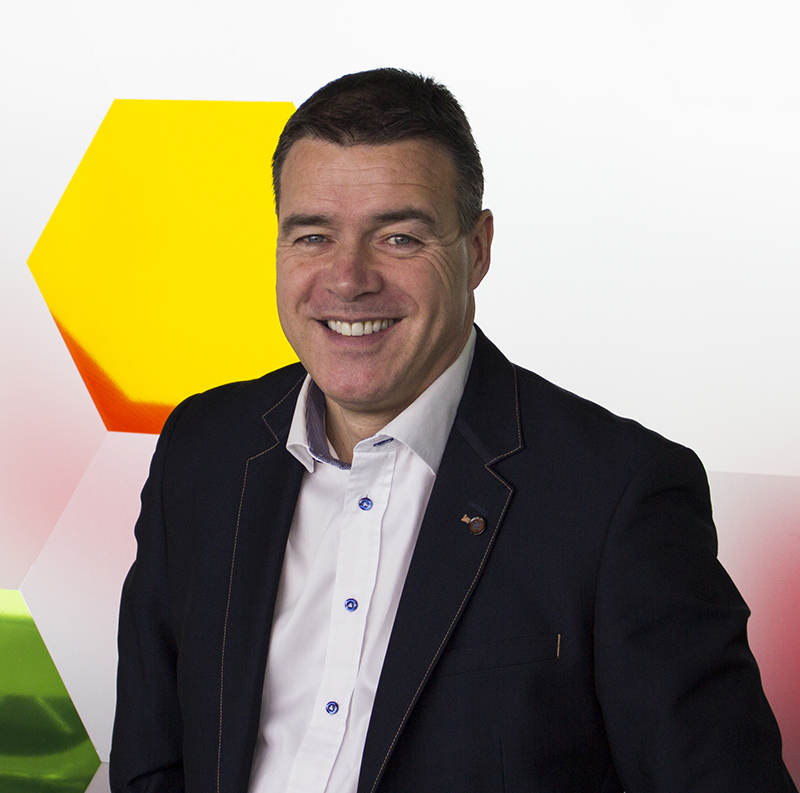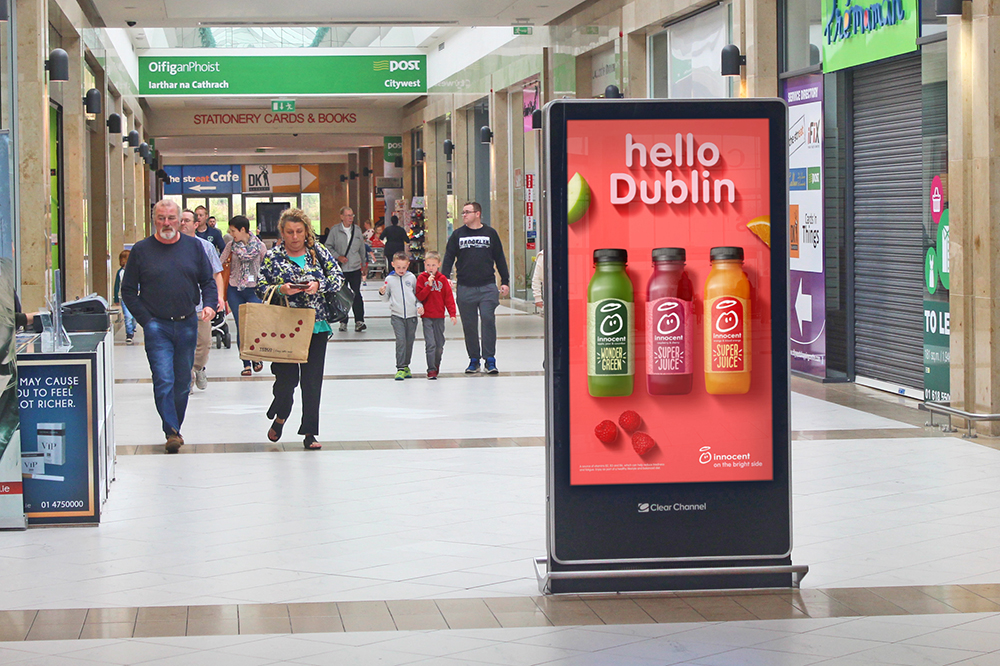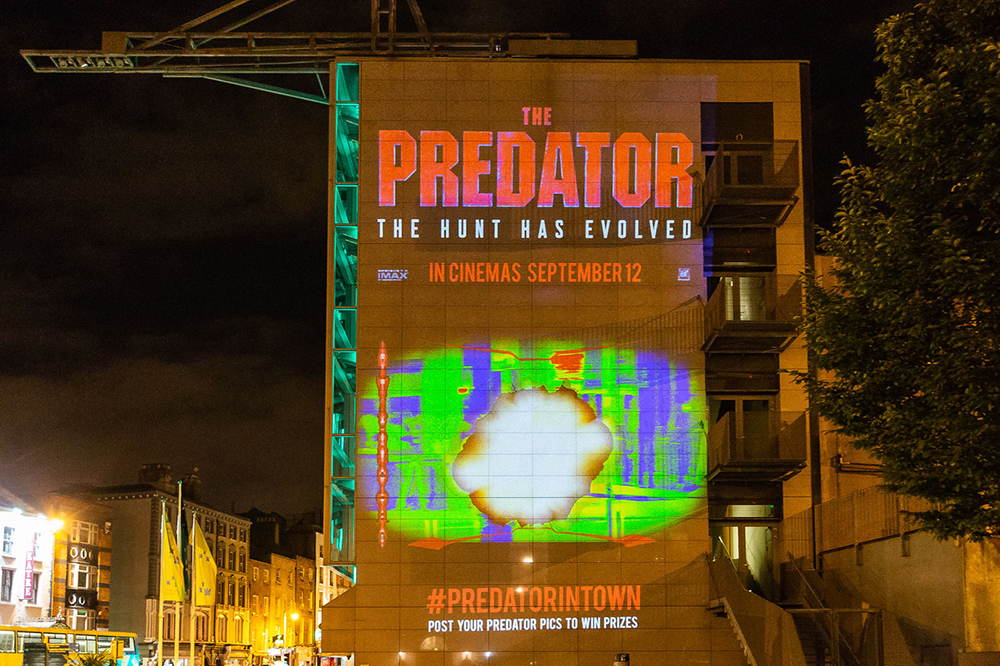The creativity prompted by an increasingly sophisticated canvas continues to drive growth in the out of home market, writes Paul Golden.
Few segments of the media industry have managed to combine traditional and digital formats as successfully as the Irish OOH advertising sector. In fact the effectiveness of established locations has been given a major boost by the arrival of digital.
OOH has fared quite well over the last 12 months. In a media market where audiences are often in decline, it is unique in that audiences are on the rise according to Tony O’Flanagan, marketing director JCDecaux Ireland.
“The number of people in employment continues to grow, so there are greater numbers of people commuting and spending time in traffic,” he observes. “We spend more time out of home than ever and most of the reasons clients bought OOH in the first place – brand building ability, mass reach, on-street impact – still apply.”
O’Flanagan acknowledges that online has had a more positive impact on OOH than many other traditional media and that clients understand its value as a prompt to go online when audiences are out and about.
“Outdoor Media Association members have been investing heavily in improved products and opportunities and I think this is very evident on-street and in the retail and travel environments,” he adds.
“Clients want their brands to display on quality products and the improvements made have helped ensure that OOH remains a relevant option on media plans.”
New clients have been coming on board from a range of categories and there have been a number of new product launches which have led to an increase in volume, says O’Flanagan. “Trading has been a little less short term as clients who want to make sure they get their campaigns away are laying down their plans earlier.”
Dynamic DOOH
Research by Kinetic shows that digital out of home (DOOH) advertising now accounts for 17% of all OOH spend and the firm predicts that dynamic DOOH campaigns will increase tenfold over the next 12 months on the back of the success of brands such as Dale Farm, whose temperature-triggered, location-specific summer campaign was the most ‘liked’ in the first half of this year according to Kinetic Insight.
O’Flanagan says he hopes to see more campaigns which have been designed specifically for DOOH and that we should be seeing more day part campaigns, more real time messaging and location based, contextualised ads.
“DOOH can offer all of this and more, so if clients want to maximise its potential we will see less of the same JPEG creatives running for two week cycles and more creative executions being scheduled to change so that they are reaching the right audiences with the right message at the right time,” he adds.
Innovative Transformation
Clear Channel sales & marketing director, Bairbre Drury Byrne, attributes the strength of the OOH sector to significant investment by media owners in digital.
“In recent years transformational changes have taken place in the way people consume media with a rise in contextual, relevant and personalised advertising,” she says. “Traditional OOH advertising has always targeted consumers when they are shopping, commuting and going about their daily activities. DOOH adds a new level by enabling advertisers to target consumers with tailored messaging by day, location, time or to amplify events/sponsorships.”
In an online era of ad-blocking, questionable data and major issues with brand trust, Drury Byrne says it is perhaps not surprising that advertisers are switching to OOH, especially as DOOH gives them the flexibility and dynamic capabilities to deliver contextually relevant messages to the right audiences at the right time.
“As with all media, reaching your target audience is vital when planning out of home campaigns and as OOH continues on its digital journey advertisers will start to use it more cleverly,” she continues. “We feel that the ‘next big thing’ will be advertisers using DOOH in a similar way to how they use social media, piggybacking on events, news stories and national days to make their messaging more relevant. The big advantage DOOH has here is its ability to build scale.”
She adds that the innovation that will take place will be in the clever and creative use of these premium digital formats. “Advertisers can now use OOH advertising in new and innovative ways,” she adds.
Classic Formats Still Win
Classic outdoor formats are the foundations on which brands are built because they offer mass reach, visual impact and location observes Colin Leahy, managing director Exterion Media. “These are the critical factors in why the medium continues to grow on media schedules – it continues to deliver these factors cost effectively and on a national scale, which is really important to advertisers.”
However, he also acknowledges that digital is bringing a lot of new opportunities to the medium and introducing new advertisers.
Advertisers are getting more opportunities with flexibly planned and bought campaigns and this has really driven demand for digital, he adds. “What you get with better technology is more opportunities for brands to target audiences in a more contextual and relevant way, which means they are increasing their impact and their relevancy. In particular we have seen an increase in dynamic advertising that allows brands and advertisers to target specific parts of the day or week.”
Leahy refers to constant development of new sites, noting that if there are no billboards available in a certain area there will more than likely be a regular bus route with bus shelters, or a supermarket where consumers can be targeted at the point of sale.
“In addition, smart city technology is an opportunity for us to work with councils to the benefit of the local authority, its residents and advertisers,” he says. “Partnership and collaboration is vital to our future – we need it to improve creativity and solve problems. It adds new thinking and gives us a different perspective, which helps us adapt and make the brand experience better for consumers and is important in terms of attracting new clients as well as retaining existing clients.”
According to Leahy, many creatives need to get back to basics in their treatment of OOH. He suggests there needs to be a focus on ‘the art of persuasion’ and how creatives target and tailor their messages to deliver meaningful engagement and interaction. “They really have to understand the medium and the channels they are advertising in – press ads don’t work on in outdoor, it has to be true visual imagery,” he says.
He believes that as OOH technology improves it is going to have a major impact on access, distribution and selling of media in general. “Digital technology is going to allow outdoor to link across all digital platforms and I think that is key,” says Leahy. “It is also going to allow OOH to become even more powerful and precise in the messaging we deliver and it will allow us to synchronise a lot more of the screens across the digital network, driving interaction between mobile and digital outdoor.”
Moving with Technology
Nightlight managing director, Geoff Fitzpatrick, agrees that technology is becoming more sophisticated and user friendly at the same time, enabling the execution of imaginative campaigns that genuinely engage audiences.
“As projection and LED technology become more powerful, large scale ‘spectaculars’ are our focus,” he explains. “Projection mapping, holograms, transparent screens and interactive projections are some of the technologies we use to build novel platforms.”
OOH is experiencing steady year on year growth globally and Ireland has been no exception, with the market set to grow by 3% in 2018 observes Geoff Lyons, managing director PML Group.
The inventory available to advertisers is continually improving, he adds. “We have seen investment in premium HD and backlit billboards and digital screens and look forward to more development with the potential arrival of digital roadside 6 sheets and bridges. The always-on medium is the perfect platform to drive sophisticated mass marketing for brands.”
Lyons refers to an increase in the number of categories using the medium with business from financial services, recruitment and retail all showing growth.
“We believe strongly in sophisticated mass marketing and this will only get more exciting and engaging for brands and consumers,” he says. “We are already seeing brands embrace dynamic opportunities to create, change and schedule adverts that change over the course of a day, a week or an ongoing campaign to make them more relevant, engaging and effective.”
Lyons notes that integration with mobile will increase. “Brands are already tapping into this by incorporating Snapcodes into artwork or complementing OOH with geofenced digital campaigns driving reach and engagement.”
Following the Leaders
Lead markets such as the US and UK are returning positive growth across a number of quarters and many online channels and tech providers (Facebook, Apple) are investing heavily in offline channels – particularly OOH – to deliver reach and visibility.
That is the view of Kinetic CEO, Simon Durham, who describes Global Radio’s acquisition of two media owners, Primesight and Outdoor Plus, as a development that will enable ‘smart opportunities’ for brands across OOH and radio.
There has been lots of talk around programmatic OOH, but he says we need to distinguish between automated and programmatic campaigns. “Automated campaigns happen, for example, when the temperature hits a certain level and the ad for ice cream displays. Programmatic takes this a step further by using audience-led data to determine when to display the ad and then buy the space based on real time bidding.”
DOOH programmatic trading will not work the same way as online programmatic as it is working with a much smaller universe of formats, continues Durham. “As an industry we need to define a new set of programmatic DOOH trading models to plays to OOH’s key strengths. We are not there yet, but it is very much the next big thing.”
Orb managing director, Geoff Fitzpatrick, refers to a substantial rise in the DOOH panel count and healthy capital investment in networks and infrastructure.
“Additionally, we are witnessing a growing appetite on the client side for more sophisticated campaigns made possible by new technologies,” he says. “Globally, software platforms such as BroadSign are building bridges between digital agencies and DOOH media owners and as the gap closes between DOOH media owners and traditional digital buyers the potential for new revenue streams is becoming a reality.”
Grandi Stazioni, Italy’s rail DOOH network is leading the way in programmatic DOOH with 15% of its estate is available for programmatic booking in major agencies trading desks, adds Fitzpatrick.
“My long term view for DOOH sees the industry change to the point where only data powered networks and offers will be strong enough to win campaigns,” he concludes.
First published in Irish Marketing Journal (IMJ September 2018)© to order back issues please call 016611660



